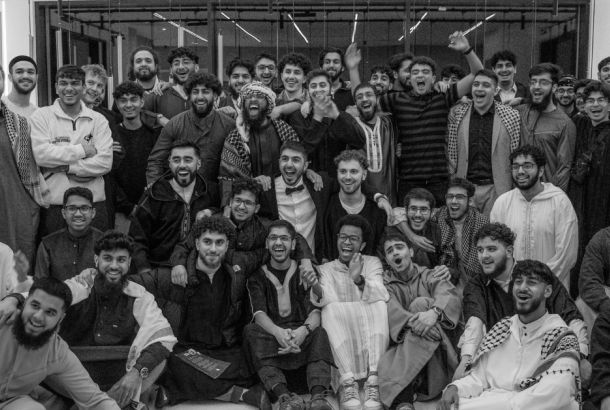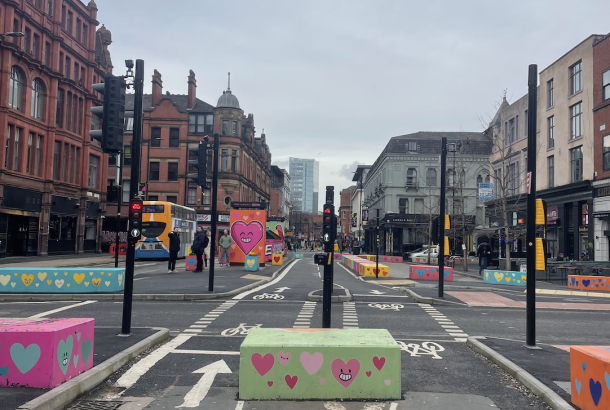On the shoulders of giants
As week four of university kicks in, most first year students will have by now figured out where their lectures are held and noted the names of these buildings. But how many of them know the story behind those names? For that matter, how many second and third years do? I’m going to explore the origins of some people we refer to daily and yet know nothing about. After all, if the last date you went on was with John Rylands (and according to a Facebook group that is over 1,000 of you), then it would be a bit rude not to know a bit about him.
John Rylands
‘John Rylands’ is perhaps name we all refer to most. Rylands was Manchester’s first multi-millionaire. Born in Lancashire in 1801 of humble origins, he was the third son of the cotton manufacturer Joseph Rylands. Clearly something in his blood then, as it was in cotton that John Rylands also made his own fortune.
In 1819, at the age of 18, he joined up with his father and two brothers to form Rylands and Sons. Selling cotton and various other textiles, the business started well and they became manufacturers as well as merchants.
The company continued to develop and John became the sole proprietor in 1838. It was here that, using his extraordinarily shrewd business mind and keen eye for trading, he was able to accumulate such a large fortune.
Rylands became part of a trade with a world-wide network of commerce. With his 17 mills and factories, he employed over 15,000 people and produced over 35 tons of cloth a day. At the time of his death in 1888 aged 87, his estate was worth £2.5m (£213m today).
Despite amassing such a large fortune, John Rylands remained a modest man. He rejected the chance to join the social circles of landed gentry and aristocracy in London, preferring to focus his attention on business. His Christian beliefs were unwavering however, and the majority of his philanthropy was driven by religion. This included the building of orphanages and houses for aged widows and public baths for his hometown of Stretford. Indeed, he never forgot his roots, and much of his philanthropy took place here in Manchester.
John Rylands is one of the best examples of the emerging ‘Manchester men’ at that time. With few advantages to facilitate growth, Manchester’s early boom relied on these ambitious businessmen and traders. It is the place it is today because of innovators like this one.
So why the library? Well, the University links are merely incidental. With the money left to her, Rylands third wife Enriqueta founded a public library in Deansgate in her husband’s honour. Opening in 1899, she continued to privately support it, donating hundreds of thousands of pounds for published works and expansions. It was not until 1972 that it was merged with The University of Manchester. Today the library in Deansgate remains a popular attraction due to its architecture and wealth of resources.
Sir Joseph Whitworth
Sir Joseph Whitworth was one of the great mechanical engineers of the Victorian era. His name can be found dotted around Manchester, including Whitworth Park, Whitworth Art Gallery and of course, the Whitworth building at The University of Manchester. As Whitworth Hall hosts the annual clapping marathon that is your graduation, it might be interesting to know a bit about him.
Sir Joseph Whitworth was born to a schoolmaster in Stockport, 1803. By the time he reached his teenage years, he was working for his uncle’s cotton mill and his enthusiasm for mechanics was clear. A man of great ambition, Whitworth left this job against his family’s wishes at the age of 18 and took up a position at Crighton and Co., a leading mechanics company in Manchester.
By 1833 he was showing no signs of slowing down. After working under tool inventor Henry Maudsley in London, he returned to Manchester and started his own company. It focused on machine tools, which Whitworth realised was in great demand there because of the expanding railway network. During this time, he invented a new way of creating flat surfaces that became the standard method within industry.
Whitworth also developed the world’s first standard for screw threads, offering new levels of precision. Enormously influential, it came to dominate British manufacturing and railway networks, drastically improving the capabilities of mass production. The Whitworth thread, or variations of it, is still commonly used today.
In the latter stages of his career, he worked for the military and developed the Whitworth rifle, intended to replace the Enfield. However, despite its obvious superiority, it was deemed too expensive and a disgruntled Whitworth instead controversially sold it to the Confederates for their Civil War across the pond.
But as Whitworth grew older, he would spend more of his time in Monaco. It was here, in Monte Carlo, that the great engineer died aged 83.
Though today not carrying the name recognition of Industrial Revolution figures such as James Watt or Richard Arkwright, Sir Joseph Whitworth is undoubtedly a major player when one is looking at industrial growth not just in Manchester, but all of Britain. He was perhaps the greatest mechanical engineer Britain ever produced.
Manchester duly pays its respects to Whitworth, but there are reasons behind the building selections. In his lifetime he emphasized the value of technical education, starting up the Whitworth Scholarship and helping found the Manchester School of Design. The University honour him today with the Whitworth Building and Whitworth Hall because this devotion.
After his death, philanthropy in his name continued, for he directed his trustees to spend his fortune on philanthropic projects. The Whitworth Art Gallery was founded from this, as was Whitworth Park.
Ernest Rutherford
Though the fifth of thirteen children, physicist Ernest Rutherford was certainly a unique mind. His contributions to nuclear physics were historic, and much of his greatest research was completed while working at the University of Manchester.
Ernest Rutherford was born in New Zealand where he was educated, thanks to a scholarship, at the prestigious Nelson College. He showed early interest in physics, and was eager to take up further study. Having achieved a double first in Mathematics and Physics at The University of New Zealand, Rutherford took up positions at Cambridge and then Montreal. It was at Montreal where he developed his disintegration theory. This treated radioactive phenomena as atomic – not molecular – processes. Several radioactive substances were discovered and Rutherford’s work here would win him a Nobel Prize.
But unusually, Rutherford’s best work was completed after this honour. In 1907 he accepted a position at The University of Manchester and irreversibly transformed the Physics department here. His attitude and enthusiasm flowed through the department and his disarming yet determined personality brought resources and supplies previously unattainable.
Rutherford’s research shifted focus from radioactivity to atomic structure and in 1909 he proposed the Rutherford Atom. It came from the research done alongside Hans Geiger and Earnst Marsden and disproved the old ‘plum-pudding’ model. The Rutherford Atom theorized the existence of an atomic nucleus- the implications of this to nuclear physics needs no explanation.
But Rutherford was still yet to ‘live the first line of his obituary’ for in 1917, he theorized the splitting of the atom by converting nitrogen to oxygen. It was – according scientist Manjit Kumar – the true dawn of the nuclear age.
As a man, Rutherford was as engaging as he was brilliant. A tall figure with a loud laugh, his friend Mark Oliphant described him as jovial, humble and energetic. He had a capacity for great compassion, too. In the 1930’s, Rutherford served as President of the Academic Assistance Council, a group that assisted Jewish scientists escaping Germany. He would go to great lengths to assist them, scraping money together for them until they found permanent posts.
In 1937, Ernest Rutherford died aged just 66 from a partially strangulated umbilical hernia. His wife Mary survived him, but sadly not his daughter Eileen, who had died in 1930. Rutherford lectured in the building holding his name, a reminder that the University was graced with the greatest nuclear scientist in history.
Alan Turing
The story of mathematician Alan Turing is both enthralling and heartbreaking. Unlike the previous names, the building here is named after him perhaps less for his contribution to the University or the city, and more to serve as a reminder that the freedom enjoyed here today was not without great sacrifice.
Alan Turing was born in 1912 to a middle class family. By the time he reached 10 he was already expressing interest in science.
This enthusiasm continued into his education. Attending the independent Sherborne School, Turing initially felt lonely and isolated. However, his ability shone while developing his first homosexual love interest for his friend and fellow science enthusiast, Christopher Morcom. Devastatingly for Turing though, Morcom died from Tuberculosis during his first year at Cambridge. It would scar Turing permanently, proving a barrier in future relationships and kick-starting his fascination with Artificial Intelligence.
He attended Cambridge also, obtaining a first-class degree in 1934. Three years later, Alan Turing had his first major breakthrough with the ‘Turing Machine’. Designed initially as a thought experiment, it proved that such a machine could perform any mathematical computation if representable as an algorism. The Turing Machine was a giant leap in the evolution of computing.
When World War Two broke out, he turned his attention to cryptology. With this, Alan Turing was about to become not just a great innovator of mathematics and technology, but a British war hero of epic proportions.
The Germans were anxious not to allow their communication lines to become compromised and used the Enigma machine to scramble messages. Alan Turing and a team of experts were recruited to work at now-famous Bletchley Park to decrypt these machines. Here, Turing invented the Bomba, a specially designed machine intended to do just that. Intelligence gained was referred to as ‘Ultra’, and by 1941 the Bomba successes were paying serious dividends. The anticipating Allied forces ambushed German U-boats again and again and helped keep Germany out of Egypt.
Turing’s war heroics led to an OBE and a position here at the University of Manchester in 1948. However, by now Turing was focusing his attention on the more abstract idea of Artificial Intelligence. He wrote pieces on the potential of computers and what constituted ‘intelligent behaviour’. It is a debate that rages on today.
Relatively speaking, Turing had long accepted his homosexuality. But post-war Britain was a different world for gay people. In 1952, while still living in Manchester, Turing embarked on a sexual relationship with a man named Arnold Murray. Murray betrayed him though, attempting to burgle his house. He believed that Turing would be too fearful of having to reveal their criminal sexual behaviour to the police when reporting him. Murray underestimated Turing. A man of immense personal integrity, he admitted to the affair in order to prosecute Murray.
What happened next was pure tragedy. Turing was charged with gross indecency and faced the choice of prison or castration. He chose the latter, knowing prison would cost him his job at Manchester. Two years later, he committed suicide by biting an apple filled with cyanide.
His work and mood had begun to suffer somewhat, but it remained a shock to his friends and family. Historian Andrew Hodges says of his motives,
“To ask what caused his death is like asking what caused the First World War.”
Alan Turing’s story is unique in its ability to provoke simultaneous feelings of both immense pride and absolute revulsion towards our nation’s history. It is the story of an eccentric, homosexual mathematician who took on Nazi Germany. A man Winston Churchill once remarked had made the greatest single contribution to Allied victory. A man Winston Churchill’s government condemned to misery and reclusion.







